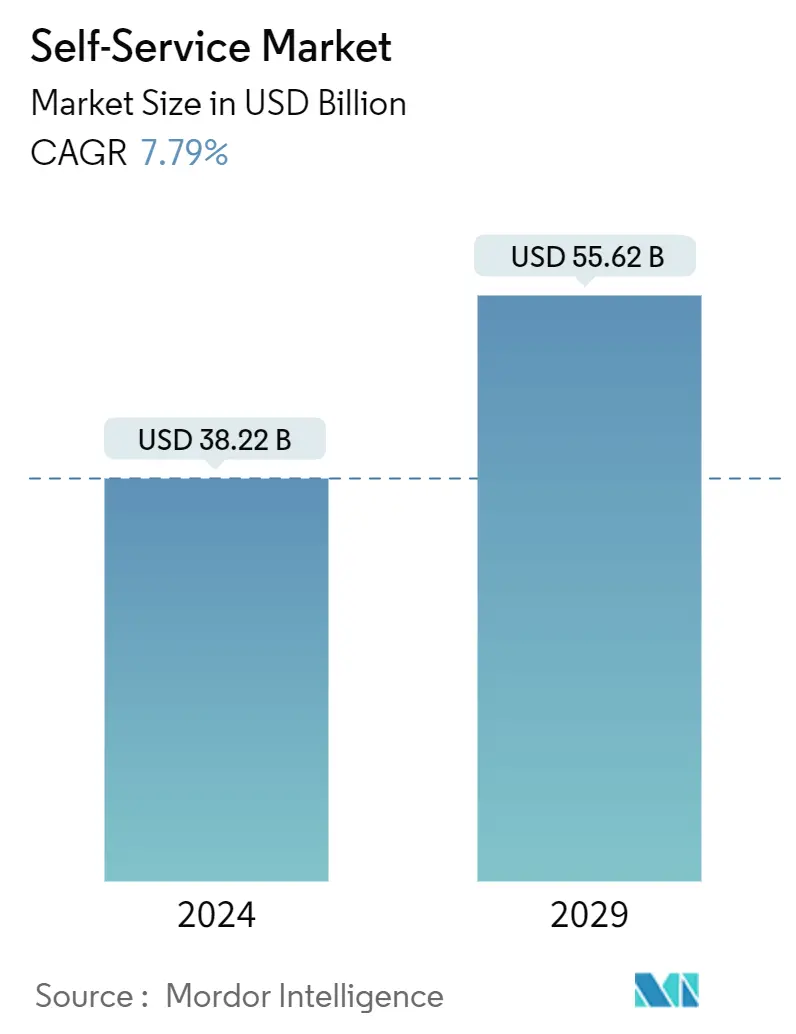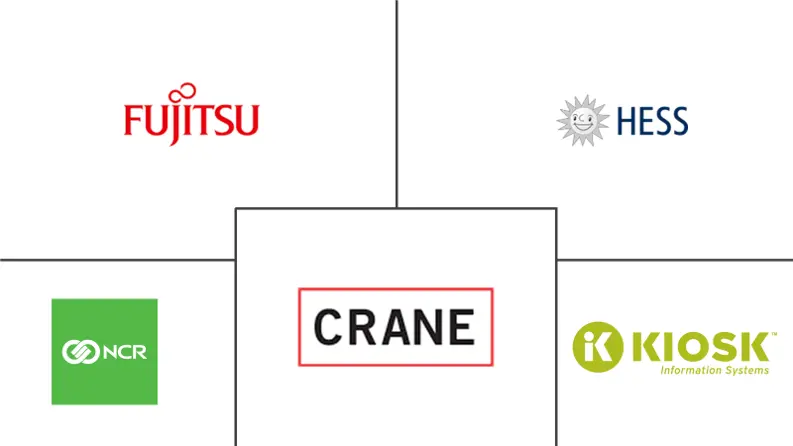Market Size of Self-Service Industry

| Study Period | 2019 - 2029 |
| Market Size (2024) | USD 38.22 Billion |
| Market Size (2029) | USD 55.62 Billion |
| CAGR (2024 - 2029) | 7.79 % |
| Fastest Growing Market | Asia Pacific |
| Largest Market | North America |
Major Players
*Disclaimer: Major Players sorted in no particular order |
Need a report that reflects how COVID-19 has impacted this market and its growth?
Self-Service Market Analysis
The Self-Service Market size is estimated at USD 38.22 billion in 2024, and is expected to reach USD 55.62 billion by 2029, growing at a CAGR of 7.79% during the forecast period (2024-2029).
Self-service technology has been around for ages with ATMs and pay-at-the-pump gas station terminals. In the present world, self-service is woven into the fabric of consumerism and is becoming an essential part of many verticals' paths to digital transformation. In Japan, where every 23rd person on the street is provided with self service assistance in the form of a convenience store, kiosk or ATM, demand for these services does not seem to be decreasing.
- In particular, given hygienic reasons and the speed of delivery, consumers prefer to use self service technology instead of human interaction. The pandemic's changing the face of selfservice in manufacturing, health care and ancillary industries, with a profound impact on consumer and business behavior. Despite the short-term social lockdown impact, the increase in demand for groceries, general merchandise, medical supplies, and home improvement among shoppers forced businesses to adopt self-assisted technologies for promoting social distancing and contact-free and cashless technologies.
- The increase in automated and self-service devices, wireless connectivity, technological advancements, and remote administration are the key factors impacting the need for self-service technology. Furthermore, One of the reasons for this shift is a persistent labour shortage that affects several sectors, in particular retailers, restaurants and hotels. A number of operators cannot find sufficient staff to cope with the demand because of such a tight labour market. This meant that in order to attract workers, small and medium sized enterprises had to raise wages. This has resulted in an increase of the trend for kiosks.
- The automatic vending machine system is another significant segment of the market. These are mostly used in retail stores or big-scale enterprises wherein the system is used for dispensing food, beverages, or any other product suitable to the system. Vending machines are expected to witness a more comprehensive implementation, owing to language barriers in countries such as Singapore and Malaysia, with a high tourism rates.
- The growth of this market is hampered by security concerns and high costs related to the installation and maintenance of designs. The increasing cyber-attacks worldwide and vulnerabilities in the existing network result in user concerns. Given security concerns and the risk of data loss, a large number of users are now doubtful about using these systems.
- However, the demand for vending machines is likely to fall as several retail chains temporarily closed their stores and a larger customer base moved towards online channels due to the onset of COVID-19 pandemic. For instance, according to company reports, due to the lack of business on the high street caused by the coronavirus epidemic, Arcadia Group, whose brands include Topshop and Dorothy Perkins or Miss Selfridge, could be forced to temporarily shut down some shops.
